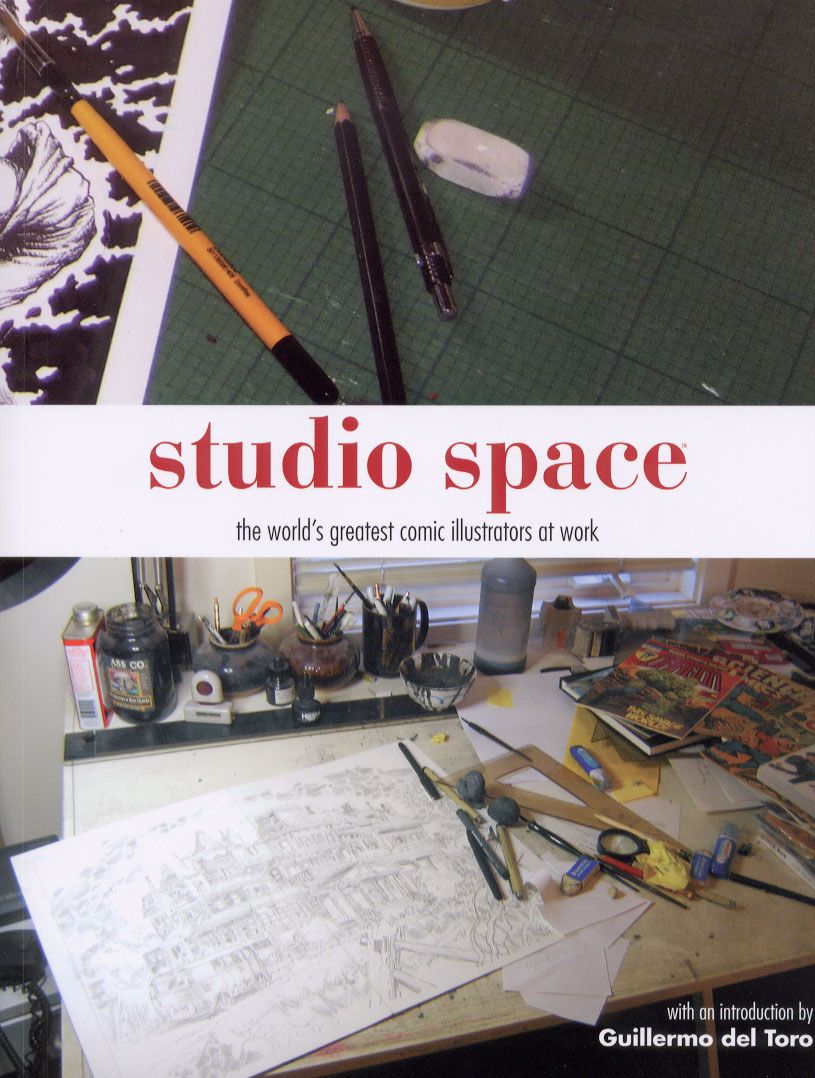At a glance, "Studio Space" seems like a perfect coffee table book for comic book fans, a synthesis of an art book and a collection of interviews that focuses on twenty great comic book artists. Joel Meadows and Gary Marshall are best known in comics for their work on "Tripwire" and the strong interviews in its annual publication.
So why, then, did I come away from "Studio Space" feeling like it never quite hit the mark?
It's strange, but it ultimately took me pulling down some of my other art books from my shelves and comparing them to figure out why "Studio Space" left me wanting a lot more. I think it's because "Studio Space" tries to be too much all at once; Meadows and Marshall's ambition for the book is so high that it just can't quite hit those heights that they have in mind.
The big problem for me was that twenty artists divided up among 320 pages meant that there isn't enough space to really give a strong, thorough look into each artist's work. I'd have loved to see "Studio Space" be a two-volume series with this same group of artists, with each person's work getting twice as much room so that we could see a larger showcase of work, and hear more about the process of creation as well as their feelings on the art.
By way of example, anyone who's met Bryan Talbot and talked to him for more than a couple minutes will attest that he is an amazingly articulate speaker who understands the artistic process like no one else. The year, he was a special guest at the Small Press Expo. One of my favorite memories was him talking about a print he created for "Heart of Empire" and describing the geometric properties of the art, how each section was designed according to the golden rectangle and how it influenced the composition of all of the characters. In "Studio Space," the entire description of the project consists of him saying (in two sentences) that he's still proud of the book.
There are strange omissions throughout "Studio Space" that were a little puzzling when I read the interviews. Tim Sale's chapter, for instance, has a two-page spread of a "Heroes" promotional art, but he never actually talks about his work on the television show, something that's certainly the most high-profile work of his career. One can't help but get the feeling that had there been more pages allocated for each artist, we'd have started to get really in-depth with these creators and truly learned a lot about them.
That's not to say that the book is a failure, mind you. There is a nice sampling of art to accompany each interview. When you compare "Studio Space" to an actual art book, though, the amount that's on display is depressingly small, and really makes me wonder what Meadows and Marshall could do were they to assemble a true art book. (Negotiating rights for all of the company-owned copyrighted material must have been a nightmare and a half.)
The real gem of the book for me, though, was a bit of a surprise. Jim Lee's interview was easily the most revealing piece in the entire book, as Lee talks about his time living in Italy with his family and how it influenced his work, and the fact that someday down the line he'd like to move far away and be a bit of a recluse, appearing at less conventions and concentrating more on his work, perhaps because as a Korean-American he's never felt truly at home anywhere in the country. It's a very candid, honest interview, and while it's very easy for artists to spit out rehearsed, glib answers, what Lee talks about with Meadows and Marshall ends up being "Studio Space"'s finest moment.
In the end, I liked "Studio Space" but I can't say that I loved it. Maybe my expectations were too high; I wanted this to be one of the big non-fiction comic book releases of the year. It is still good, and I'm definitely going to hang onto my copy of the book. I just wish it could have been a little longer. "Studio Space" barely scratches the surface for a lot of these artists, and I want to hear more.

